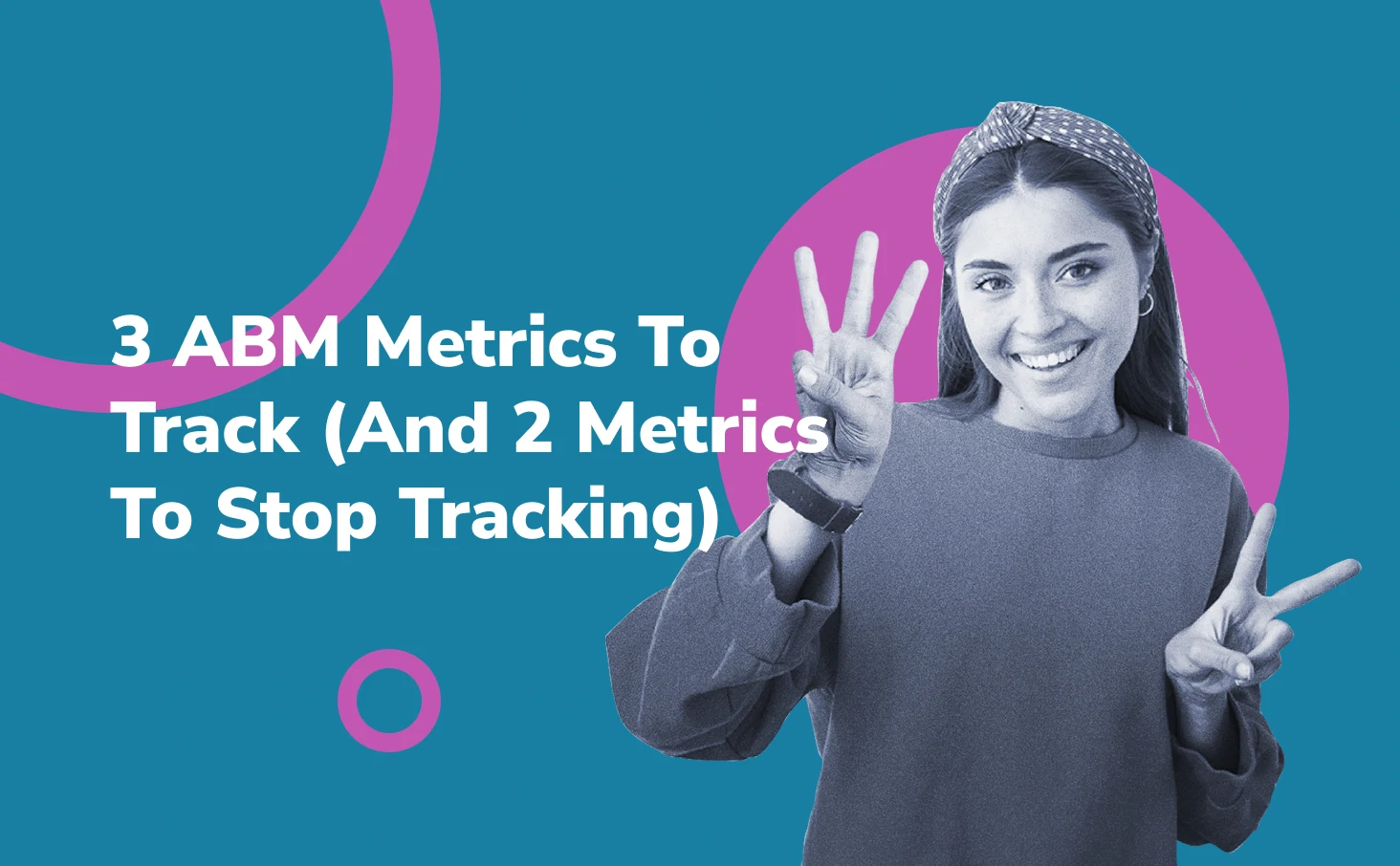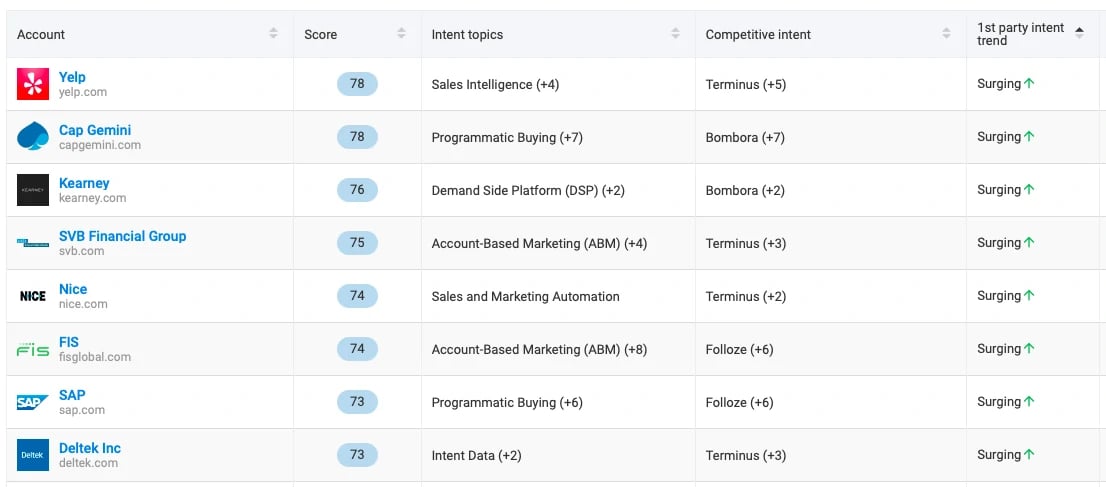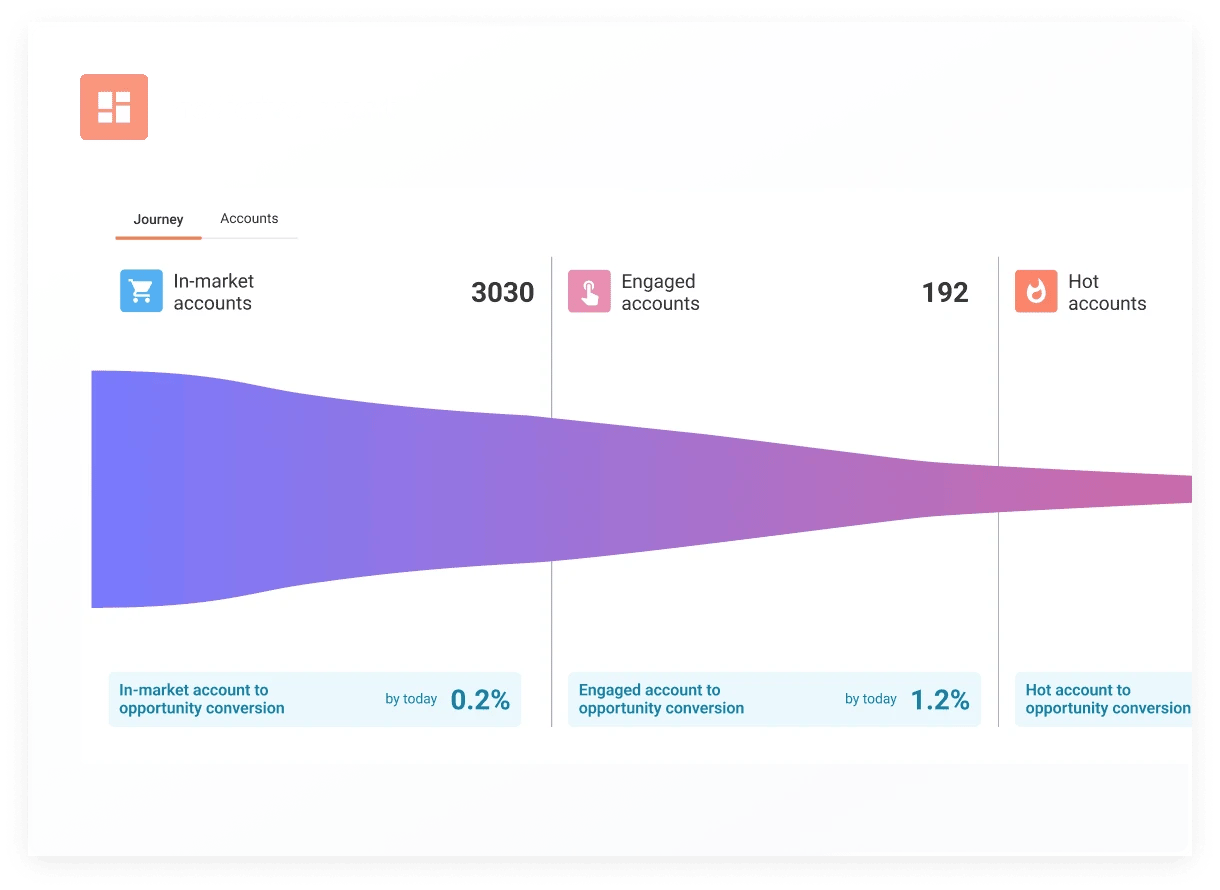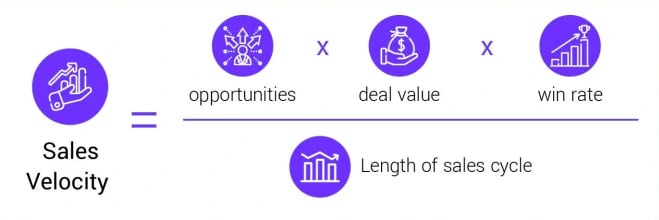
Yulia Olennikova
~2 min
3 ABM Metrics To Track (And 2 Metrics To Finally Stop Tracking)
Are you struggling to determine which ABM metrics are the most important to track?
It's a common challenge faced by many marketers today, as ABM is vastly different from traditional marketing. With ABM, you're targeting specific accounts rather than broad segments of the population, which makes things a lot more complicated.
When you are targeting individual accounts, it's easy to find yourself wanting to track everything related to them - from the exact emails opened and videos viewed, to which ads they have seen.
However, it's important to remember that not all metrics are useful for driving your business objectives forward - and in fact, tracking some can be a huge waste of time. This is why it's essential to understand which metrics are important and how they can help you reach your goals.
To help you navigate the ABM metrics landscape, here are 3 essential metrics to track - and 2 that you should stop focusing on.
3 ABM Metrics To Track
Implementing an account-based approach isn't something that happens overnight.
It takes some time and effort to get everything set up and running smoothly and it requires careful planning and execution to ensure that all the necessary pieces are in place and working together effectively. In fact, it takes at least six months to fully implement and see the benefits of an ABM strategy, so you need to be patient.
Now, I know we all love seeing an increase in revenue, but with ABM it's important to keep an eye on other important metrics before we see any impact on the bottom line.
Keep in mind that Rome wasn't built in a day, and neither are successful ABM campaigns!
So don't get too obsessed with immediate results, and focus on building a solid foundation for your ABM efforts.
By tracking the following metrics, you can make sure that your ABM efforts are on the right track and will eventually reap the benefits you desire:
1. Target Account Engagement
Target Account Engagement is a metric that measures how engaged your prospects are with your brand - which is essential to measure when you're focused on individual accounts. This is the first important indicator that you should track to ensure that your ABM efforts are bearing fruit.
By tracking how often prospects interact with your brand, and whether they take any desired actions (e.g., visiting your website or downloading a whitepaper), you can assess how effective your campaigns are and make adjustments as necessary.
Engagement should start flowing quickly - within days or even hours after the launch of your campaign and over time, you should see a steady or increasing engagement from your target accounts.
Depending on the channels you choose, engagement indicators can be different, for example:
- Ad clicks
- Video views
- Website visits
- Email opens and clicks
- Social media engagements
- Content downloads
If you see that engagement is decreasing at any point, you should take a close look at the content and creative of your campaigns to see if there are any areas that can be improved.
As an alternative, if you use ABM and intent data platforms, you can track buyer intent.
This is a compound metric that takes into consideration all engagement signals from your target accounts and combines them into one easy-to-read score. This score can be used as an indication of how interested a particular business is in your offerings and can help you determine how to better tailor your campaigns.
At N. Rich, we use an aggregated Intent Score to evaluate the engagement dynamics.

If you don’t see your target accounts engage with your creatives, don’t wait for weeks. Engagement should grow and improve over time. If it doesn’t, as we mentioned, then something’s wrong with the campaign and you should do something about it:
- Make sure the accounts are in your ICP
- Check targeting settings
- Check tracking settings
2. Influenced Pipeline
About four to six weeks into your ABM campaign, you'll have enough data to identify the number of accounts in the pipeline that have been influenced by ABM and track their performance.
This is a crucial metric to monitor, as it shows how many target accounts are responding to your ABM activities and, ultimately, how much potential revenue they could generate. If you're following an account-based approach, you should expect to see the percentage of influenced accounts grow over time.
And, as you work on building awareness and trust with the company's buying committee, you should also expect to see better engagement with your content and higher response rates to sales outreach from those accounts.
Carefully monitor this metric to understand how well your account-based activities are performing and make sure you understand what's working and what isn't. If you don't see the desired results, adjust your approach and try something else. And if you do, stick to it, invest more in those activities and watch your pipeline flourish!
To keep tabs on the accounts influenced by your ABM efforts you can use your CRM or an external account-based analytics tool like N.Rich.
These tools allow you to track the number of target accounts at every stage of the buyer journey, as well as the percentage of accounts influenced by ABM and their conversion to opportunity.
In other words, you'll have a bird's-eye view of your ABM progress and be able to see exactly how your efforts are paying off.

3. Sales velocity
While you may not be able to track sales velocity right away, it's an important metric to keep in mind as you move forward with your ABM efforts.
When you start seeing opportunities and closed won deals coming from ABM-influenced accounts, it's time to calculate the sales velocity for those accounts.
Sales velocity is a measurement of how quickly an account goes through the pipeline and generates revenue. The beauty of this metric lies in its complexity as it consists of 4 very important metrics:
- The number of open opportunities: The number of opportunities that have been opened as a result of ABM efforts
- Average deal size: The average size of deals from ABM-influenced accounts
- Sales cycle length: The length of time it takes to move an account from initial contact to closing
- Win rate: The percentage of win opportunities out of the total number of opportunities
Once you have all of these metrics, you can easily calculate the sales velocity by applying the following formula: (Opportunities * Average Deal Size * Win rate) / Sales cycle length.

For example, if you have 10 opportunities with an average deal size of $7,000, a win rate of 40%, and a sales cycle length of 25 days, your sales velocity will be $1,120.
The reason why this metric is so important is that it helps you understand the efficiency of your ABM activities. With this metric, you can accurately measure your campaigns and determine which ones should be scaled up and which ones need to be adjusted.
If you take a look at the formula, you can easily see that all of the four metrics involved play an important role in calculating sales velocity, which means that even a small change in one or two of these metrics can make a huge difference. Therefore, each one of them should be tracked and monitored carefully to ensure that the sales velocity of your ABM efforts is as high as possible.
When measuring sales velocity, think of which one of these four metrics you can improve the most or the fastest without affecting the others. For example, if your sales cycle length is the longest one, then focus on reducing it. On the other hand, if your win rate is low, you should probably focus on increasing it before anything else.
A lot of times, when you improve one of the four metrics, the others will automatically get improved as well. So it's important to take a holistic view of your sales velocity and understand what needs to be done to maximize it.
Caution: Don’t forget to exclude any deals you received before your ABM campaign started.
ABM Metrics To Finally Stop Tracking
Now that we’ve gone over the main ABM metrics you should be tracking, let’s discuss some of the ones you should stop tracking immediately.
The sooner you ditch these metrics, the healthier and more efficient your ABM process will be. You'll be able to concentrate on building your pipeline, influencing target accounts throughout the sales cycle, and making a real impact on revenue. So, without further ado, here are 2 metrics to say goodbye to:
1. CPC
In today's digital world, with the rise of zero-click content, relying solely on clicks as a metric for success can be a very limiting strategy.
Sure, you can build successful PPC campaigns with high CPC, or generate tons of irrelevant traffic with low CPC. But what really matters is the quality of the traffic you're attracting. That's why you may want to pay a little extra for a click if it meets the following criteria:
- It comes from an ICP account
- It happens at the right time and stage in the buyer's journey
- The content and messaging are so relevant 70% of clicks end up converting to a demo request
So, while it may be tempting to focus solely on clicks, remember that there's more to PPC success than just the number of clicks you generate. Instead, focus on attracting high-quality traffic that's likely to convert. It may cost a little more upfront, but the long-term benefits will be worth it.
2. MQLs
For a long time, MQLs have been the main focus of marketers, but tracking them is no longer enough. In fact, it never was, but they were the "only" and easiest way to measure the effectiveness of the marketing department.
Now, focusing on MQLs can actually be detrimental to your marketing efforts. Keep in mind, just because someone showed interest in your content (webinar, market study, or guide) doesn’t equal interest in your product or service so it's a waste of time and resources to pay that much attention to them.
Moreover, you can face the situation when you’re already in the deal stage with the company’s marketing department and someone from CS is downloading your brochure. You wouldn't want to put the CS manager in your lead nurturing flow (or even worse - have an SDR reach out and try scheduling a demo) because it doesn't make sense, right?
Well, that's exactly why MQLs should not be your main focus.
Because a lot of things related to MQLs don't make sense.
So, instead of focusing on MQLs, you focus on building relationships that result in real business opportunities.
The goal should be to build relationships with real people, at real target accounts, and measure how well you're doing in terms of building pipeline and influencing your target accounts, not how many crappy leads you generate.
What's also very important to mention here is that you should always think account-based, not contact-based. Meaning, focus on the entire account and its engagement with your brand instead of individual contacts within it. This way, you'll be able to track the entire customer journey and measure your success more comprehensively.
To make the most of your efforts, you should instead focus on metrics that can give you insights into the success of your ABM strategy. That way, you can adjust your tactics and strategies to drive the results that matter most: revenue.
ABM metrics require a shift in focus from traditional marketing metrics and demand that you take a more comprehensive approach to measuring success.
This is certainly not easy, but the effort is well worth it considering the potential to increase revenue and drive tangible results.
By understanding the metrics that matter most, you'll be able to better comprehend your target accounts, tailor your messaging and content to their needs, fill your pipeline with qualified leads, and ultimately grow your business.
Yulia Olennikova
Marketing Manager at N.Rich